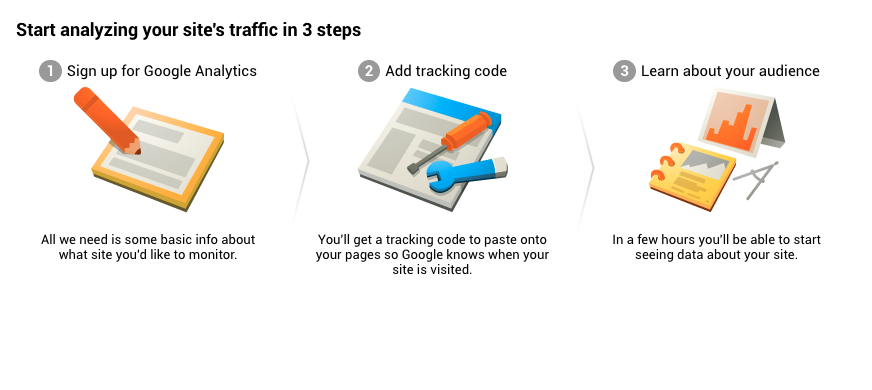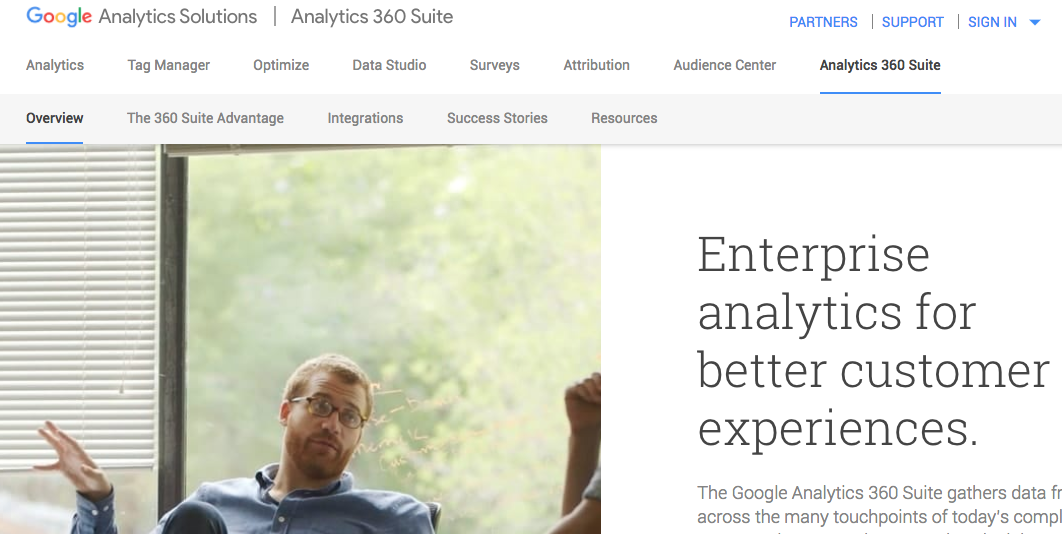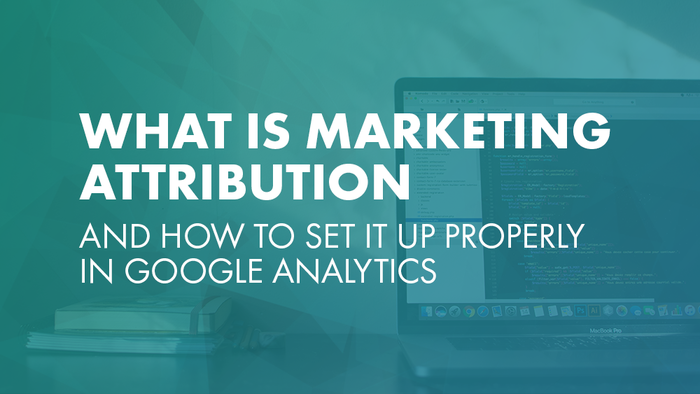It’s been said that “Marketing costs money, sales makes money.” Of course, investing in promotion is necessary to drive sales, but the question is, how effective are the promotional tactics being employed? Did ads on billboards drive customers to buy, or just raise awareness? Was a television ad or a radio ad more effective?
Businesses have long struggled to understand which marketing activities lead to sales and which have the most impact, and the old world offered meager means for measuring marketing success.
But with the recent rise of digital media and marketing analytics, businesses can now gain greater insight into where their sales come from and which activities are driving the most sales. Marketing campaigns with email, web and mobile touchpoints, coupled with robust Customer Relationship Management (CRM) software and powerful analytics tools, have given marketers unprecedented visibility into the efficacy of their efforts.
This is marketing attribution.
Marketing attribution attempts to distribute the dollar value of a sale to the marketing activities that led to that sale. This helps marketers more clearly show their value to executives, as well as helping to optimize their marketing strategy. Apportioning sales dollars to go-to-market activities requires an understanding and wise application of marketing attribution models. It also requires thinking a little differently about marketing.
Giving Credit Where Credit is Due
To get past the “cost center” mentality, start by seeing your marketing efforts as influencing the customer journey across multiple platforms, ending with the customer clicking the “Buy” button. Each step of the way, you want to give your customers the information, encouragement and motivation they need to take the next step – and the next. Changing your view of marketing from cost center to sales generator is a necessary part of proper marketing attribution.
Once you’ve made this mental shift, digital media enables you to assign (aka “attribute”) specific revenue amounts to specific marketing channels. As Molly Galetto of NG Data explains, “Marketing attribution ties marketing function to revenue accountability. With hard numbers.”
If marketers can’t show they make money, they may be out of a job. Marketing attribution, then, provides a way for them to prove the value of what they do.
Assigning Dollar Value To Marketing Activities
Salesforce.com defines the sales process as:
- First touch
- Lead conversion
- Opportunity creation
- Customer close
By designing marketing campaigns with digital touchpoints at each stage of the process, marketing teams can summarize which touchpoints most impacted the user journey to a purchase and weigh them appropriately.
For example, let’s say a campaign includes email outreach, social media messaging, print media with QR codes for mobile scanning and YouTube videos. Each of the aforementioned channels included links back to a unique landing page.
As a customer engages with these channels on the path to making a purchase, the company’s CRM system records these events and reports them to the marketing team. Robust analytics can combine marketing spend by channel, customer touch history, booked sales and a well-thought-out attribution model to estimate a cost and revenue amount for each outreach channel.
Armed with these insights, your marketing team can better understand where they get the most bang for their marketing buck, and ultimately drive more sales.
Insight into Quality and Optimization
Attribution insights provide a second benefit: which channels are making an impact on conversions, and which need to be improved or dropped altogether.
Marketing analytics expert Daniel Kerher put it this way: “Without the knowledge gained from marketing attribution, planning, allocating and executing future marketing dollars can be fraught with danger and futility. The old adage – ‘half my marketing works, I just don’t know which half’ – would still rule.”
To better understand what is and isn’t working with your marketing, iProspect.com recommends the following methods to iteratively analyze, evaluate and optimize the effectiveness of your marketing channels.
- Time lag to conversion: capture the time dimension of channels to closed sales
- Frequency sweet spot: identify the number of touches required in each channel to move customers to the next steps
- Accurate channel influence: think deeply about the impact of early-stage customer touches in your sales funnel
- Effect of offline media: Hypothesize, test and adjust relationships between online and offline media
The same report notes that organizations that implement a marketing attribution strategy see a 15-35% increase in media efficiency with similar results in ROI. According to iProspect, “With better and more holistic data, you have a clear picture of where your marketing wins come from. …You will have all the tools and information you need to continuously improve your marketing results and ROI.”
Identifying which customer touchpoint is responsible for what percentage of revenue can be a cause of contention within a company. There are many different ways to attribute a conversion to the customer touches leading up to the sale, but choosing the right model(s) requires a deep understanding of a given company’s business.
Single Source Attribution
Single source attribution gives all the credit for the sale to only one touchpoint in the customer journey, typically either to the first click or the last click.
This method is the easiest to implement: a 2015 AdRoll study found that nearly 60% of all marketers used this method. The challenge with these models is that they don’t account for the other steps in the customer journey, and they don’t provide insight into how to optimize it. They are also not good for long, multi-touch customer journeys.
Multi-Source Attribution
Sometimes called linear attribution, this method attributes all sales revenue equally across every marketing channel. This approach takes all the steps in the customer journey into account, and can be relatively easy to implement. However, it could end up overvaluing or undervaluing channels relative to their true influence on the sale.
Weighted Multi-Source Attribution
Another type of multi-channel attribution attempts to estimate the influence different channels have on a sale while still giving each channel some credit.
Weighted models include:
U-shaped
Also known as position-based attribution, this model gives the first and last touch the largest weight, usually 33-40%, while the remaining 20-33% is distributed among all the intervening channels. This model makes sense for businesses that deem lead generation and conversion most important. However, it can undervalue important touchpoints along the way.
Time Decay
This model gives the most weight to the conversion touch, the second most weight to the second to last touch, and so on. It’s good for businesses with a short sales cycle where the later touches have more importance. However, like the U-shaped model, it could undervalue other channels and is not good for longer sales cycles.
Custom
Marketers who have a firm grasp of their customer journey – and perhaps data from previous use of other models – can apply their own weighting scheme to their customer journey. For example, if experience shows that 75% of prospects who attend a webinar halfway through their journey later convert to a paying customer, marketers may want to attach a higher weight to that channel.
This model also comes with some risk, as it’s subject to a marketer’s subjective opinion about what constitutes a significant marketing event, which could obscure other optimization opportunities.
Artificial Intelligence Models
All of the aforementioned models rely on some type of human observation and reasoning, which are subject to human bias. Artificial intelligence (AI) models attempt to harness machine learning technologies to predict conversions from historical channel data.
This approach could provide a data-driven view of the customer journey and insights for optimization. Of course, this method will also require significant investment in data acquisition, cleansing, warehousing and predictive model development.

Last but not least, we should discuss the considerations that go into selecting an attribution model.
How Does Your Customer Buy?
Before selecting a model, you have to know how your customer buys from you. What does your sales funnel look like? It certainly includes some combination of generated leads, qualified leads, opportunities and conversions. It’s critical to understand how customers move from one stage to another before you do anything else.
What Are You Trying to Accomplish?
Next, spell out the objective of the given campaign. Are you trying to drive sales? Increase brand awareness, purchase frequency, or transaction size? Be sure the end goal is clear to everyone on your team. With that objective in mind, further define those goals by each channel you’ll use for the campaign. Clarifying channel goals will be helpful in evaluating and adjusting your attribution model.
Select, Test, Repeat
After an appropriate amount of time, identify how each channel is performing against its goal. If the results differ greatly from your goal, try a model more suited to the results. You could also run and test multiple attribution models simultaneously.
Once you understand what attribution is, why you need to do it, and which models are appropriate for your business, you’re ready to get started. Google Analytics (GA) is the ideal free resource to monitor, analyze and attribute customer touches.
Getting Started With Google Analytics

Getting started with GA is a snap. Using your Google email account, go to http://analytics.google.com to access the GA interface. You’ll need to add GA code or tags to your website, if you haven’t already. Google also provides several free training resources that you can access here: https://analytics.google.com/analytics/academy/.
Start with “Google Analytics for Beginners.” Allow yourself 4-6 hours to complete the course.
Getting Better with Google Analytics
Take your newly-minted attribution and GA skills for a test drive using the Multi-Channel Funnel (MCF) report. This report enables you to better visualize your customer journey and gain insight into the quantity or quality of customer touches that resulted in a conversion. This function also enables importation of cost data, which can be helpful for identifying customer acquisition cost.
Now that you have insight into your customer journey, you can start assigning credit to these channels using the GA Model Comparison Tool.
In the GA dashboard, click the Conversions > Model Comparison Tool link. GA will allow you to compare three different models at once. Be aware that the default lookback is 30 days, but it can be extended to 90 days.
The challenge for those new to marketing attribution is that the MCF report and model comparison tool rely on somewhat subjective notions of the right model for a given business. What is needed is a fact-based method to hypothesize, test and refine a model. This is where Google 360 can help.
Graduate to Google 360

Google 360 is the enterprise version of GA. Google 360 enables you to bring Artificial Intelligence models to life using Data Driven Attribution Modeling. This feature uses data science to analyze your customer journey data and identify the model and weighting that is best for your business.
In addition to employing data science, Google 360 helps you do your own data science using BigQuery. This feature enables data scientists to extract of billions of detail-level records for development of even more sophisticated custom attribution models.
As of this writing, Google is developing Google Attribution (free) and Attribution 360 (enterprise) to take marketing attribution to the next level. Planned features include integration of broadcast media, Google AdWords, Analytics and Attribution integration and tracking cross-device customer journeys.
With the rise of digital media and data analytics, there is unprecedented opportunity to gain fine-grain insight into your customer journeys. Tag Inspector can help, as can diligent and savvy application of marketing attribution concepts and technologies to your marketing efforts. Ultimately, these efforts can result in deeper, longer-lasting and more profitable customer relationships, and greater ROI for your marketing dollar.
Are you using Google Analytics for marketing attribution? If so, share your best tips and tactics in the comments below:





